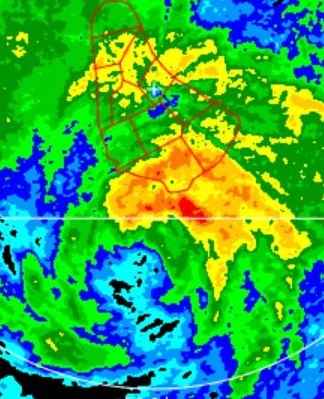CyclonicFury wrote:tolakram wrote:aspen wrote:2021 doesn’t need to have a super early MDR hurricane like Beryl, but last year I went through every season from 1980 to present day and found a strong correlation between MDR or AEW-based storms/hurricanes in July and overall season activity. Accounting for 2020 (which had 3 AEW July systems, two of which became hurricanes), the average season numbers are:
—16.9 named storms
—9.0 hurricanes
—4.1 majors
—160.29 ACE
For seasons that had any non-AEW-based July system, even if they also had a tropical wave born system as well, the average is much lower:
—13.4 named storms
—6.6 hurricanes
—2.9 majors
—115.40 ACE
So yes, July activity is a very strong sign of what the rest of the season could be like. However, the fact that a lot of things are attempting to form this early does make the predictions for an above-average season more likely…unless there’s a sudden shift to +ENSO.
Bringing this over here, since it was used as a source.
This article also says an Active July portends a higher ACE season.
https://www.wunderground.com/cat6/farewell-don-watching-hilary
2017 ended up at 226 ACE after 2.5 systems in July.
What this doesn't say is the typical ACE for seasons with lower July activity.
I believe 2017 only had about 1 ACE in July. 2004 had 0. You don't always need an active June or July for a strong hurricane season. I think it's possible we could see a hurricane in July, but you don't see one every year.
I’m inclined to believe that July ACE doesn’t matter a whole lot; rather, just the presence of any system developing from an AEW is enough of a signal for an active year with high ACE.
2017 had the lowest ACE for its first five storms of any season thus far, and its early season MDR storms were pathetic and barely even tropical storms. 2005 had the most active July on record, with two long-tracking 130+ kt major hurricanes and a few other systems. Both seasons finished with absurdly high ACE totals of 250 (2005) and 227 (2017), which are surprisingly close for seasons with such vastly different July activity levels.
Another pair of seasons I want to bring up are 2018 and 2019. Both finished with nearly the exact same ACE, less than 1 unit different from each other, and both had at least one July hurricane. However, 2018 had a MDR hurricane (Beryl) while 2019’s only July hurricane came from a non-tropical disturbance. This also might suggest that storm quality doesn’t matter that much, as compared to the existence of a storm. If conditions are favorable enough for any kinda of system to form in the MDR and/or from a tropical wave in July, or if any hurricane forms in July, then it signals that conditions will be very favorable later in the season and lead to above-average activity.
















